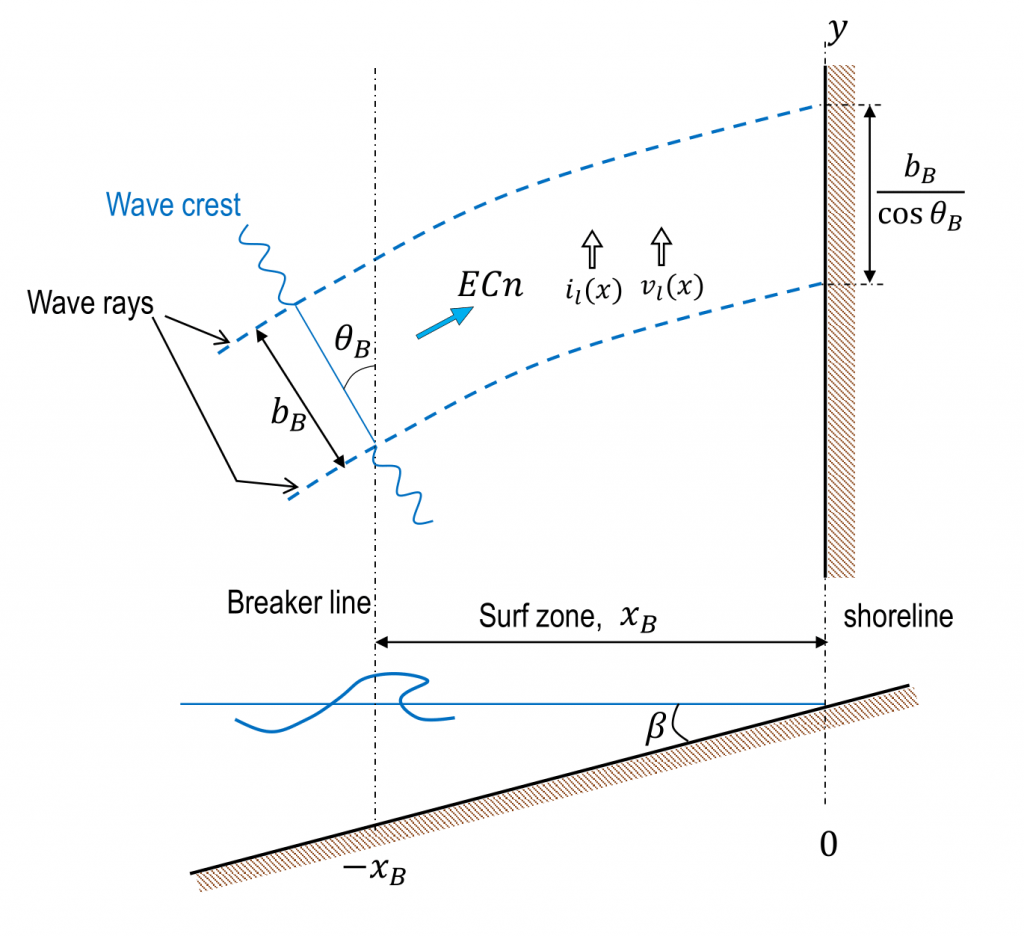A short writing about longshore sediment transport as a note-taking thingie. Also, I wanna try the formula plugin in this platform, but SADLY, it only works for inline equation and not for the other. Thats why the equations are ugly here. Help me if you know something.
Anyway….
Longshore sediment transport rate (LST) is the volume of sediment which moved parallel to the coastline per unit time ($latex Q_{LST}$). LST can occur in two alongshore direction following the breaking wave angle. Conventionally, LST is assigned positive when the sediment is transported to the right hand side of an observer looking out to the sea, and vice versa. The net LST is the sum of the positive and negative component, while the gross LST is the sum of the magnitude of both directions.

One of the most widely used method to compute the sediment transport is the CERC formula (SPM;1984) which was derived based on the wave energy flux method. It is assumed that the longshore transport rates depends on the longshore energy component in the surf zone as illustrated in the figure. In the figure, a plane beach with a parallel bathymetry and uniform slope of $latex \tan{\beta}$, received an oblique incident waves uniform in $latex y$ direction with an angle of $latex \alpha_B$ in the breaking point. The energy flux is calculated as $latex P=ECn$ where $latex E$ is the wave energy, $latex E=1/8\rho g H^2$ and $latex n=\frac{1}{2}(1+\frac{2kh}{\sinh{kh}})$ is the ratio of group velocity and phase velocity, thus $latex ECn=EC_g$. Considering the incoming wave angle and applying linear theory in shallow water where $latex C_g=C$, the longshore transport rate can be calculated as follow.
[latex] Q_{LST}=\frac{(EC_g)_b}{(\rho_s-\rho)g(1-n)}K\sin{\alpha_{BS}}\cos{\alpha_{BS}} [/latex]
where $latex \alpha_{BS}$ is the angle between the breaking wave direction and the shoreline, and $latex K$ is an empirical coefficient ($latex K=0.77$ or calibrated). I believe the calculated $latex Q_{LST}$ would be in cms.
Thanks for reading!